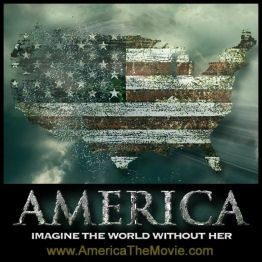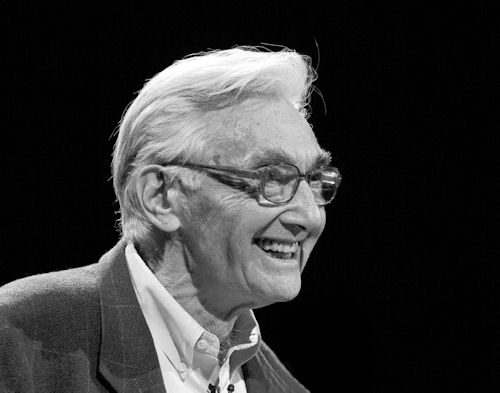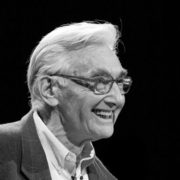DINESH D’SOUZA’S AMERICA
Dinesh D’Souza’s America:
His Land Ain’t My Land
 Dinesh D’Souza’s America opens in medias res, in the midst of the American Revolution, and before we have had time to settle in, we see General George Washington riding by as he is…shot dead by a British sniper’s bullet. What if, D’Souza’s movie speculates, George Washington had died that way and America had never been born. What would the world look like today?—a fascinating hypothesis–but apparently not enough to hang a movie on.
Dinesh D’Souza’s America opens in medias res, in the midst of the American Revolution, and before we have had time to settle in, we see General George Washington riding by as he is…shot dead by a British sniper’s bullet. What if, D’Souza’s movie speculates, George Washington had died that way and America had never been born. What would the world look like today?—a fascinating hypothesis–but apparently not enough to hang a movie on.
As John Milton found out while writing Paradise Lost every epic needs a villain as well as a hero, and often the villain—in Milton’s case Satan—is the more interesting character than—in his case the Lord. In Dinesh D’Souza’s pseudo-documentary America: Imagine a World Without Her, a hypothetical retelling of the American story the hero—it goes without saying—is America—while the villain is the late great Boston University historian and author of The People’s History of the United States, Howard Zinn. Howard Zinn’s basic point of view as an author is so misrepresented and demonized that one wonders how it became such a successful book in the very free-marketplace of ideas that D’Souza claims to celebrate. After all, to one less ideologically committed to making him into the villain he well could have been one of the film’s heroes.
D’Souza celebrates soldiers—from the American Revolution to the Vietnam War—and Zinn was a combat veteran of World War II—a fact that transformed his life and became a hallmark of his view of history—but which D’Souza conveniently leaves completely out of his account. Why? For the obvious reason that it may well have made him look sympathetic—as it made another Boston icon look sympathetic—since like Ted Williams Zinn too was a combat bomber pilot during the war.
D’Souza celebrates ordinary workers—such as Irish immigrants and himself—another immigrant success story—this time from India. Zinn too came from an immigrant family—Jewish immigrants from Eastern Europe who settled in New York’s Lower East Side at the turn of the last century, and before he went into teaching and writing, was a shipyard worker all through the Great Depression. Teaching was his second career.
And D’Souza celebrates intellectuals—virtually everyone interviewed for the film was an academic of some kind—as was Howard Zinn—a professor of history and political science first at Spelman College in Georgia and then at Boston University. But Zinn (as well as a number of others interviewed for the film) who was broadly speaking, on the left, once said “Dissent is the highest form of patriotism.” It’s that point of view that D’Souza wants to dismantle in his neoconservative narrative of America.
The problem with the argument he’s making, however, is that it is largely speaking Howard Zinn’s own masterpiece that provides the most powerful insights and characters for D’Souza’s counter-narrative of American History. To take but one glaring example—before Zinn’s book how many historians gave a central role in American history to abolitionists in general and one abolitionist in particular, Frederick Douglass? Practically no one, that’s who. He is one of the heroes of Zinn’s book; and—without even remarking on the irony—he is one of the heroes of D’Souza’s revisionist film.
 To make his case that Howard Zinn is Public Enemy Number One, D’Souza relies on the suspect tactic of the late Sen. Joseph McCarthy—guilt by association. Not that Zinn himself ever associated with them, but D’Souza interviews both Ronald Radosh and Ward Churchill in the context of his brief against the author of The People’s History of the United States—Ward Churchill, a former professor at the University of Colorado, and Ronald Radosh, a self-avowed former Communist who has made his living as an anticommunist writer ever since and smears Zinn with the unsubstantiated claim that Zinn was himself a “former Communist” who abandoned the party “because it wasn’t radical enough!”
To make his case that Howard Zinn is Public Enemy Number One, D’Souza relies on the suspect tactic of the late Sen. Joseph McCarthy—guilt by association. Not that Zinn himself ever associated with them, but D’Souza interviews both Ronald Radosh and Ward Churchill in the context of his brief against the author of The People’s History of the United States—Ward Churchill, a former professor at the University of Colorado, and Ronald Radosh, a self-avowed former Communist who has made his living as an anticommunist writer ever since and smears Zinn with the unsubstantiated claim that Zinn was himself a “former Communist” who abandoned the party “because it wasn’t radical enough!”
Zinn—against those claims that originated with the FBI surveillance of him that went on for a quarter century—always and unequivocally denied that he ever belonged to the Communist Party. He never took the 5th Amendment but clearly stated that he was not and never had been a Communist—a fact that neither Radosh nor D’Souza even mentions. Why? Once again, someone who disavows communism when the central narrative of D’Souza’s movie is its anti-leftwing bias might tend to look sympathetic from D’Souza’s own perspective. I think that’s what is called cherry-picking the evidence—in order not to confuse your audience with the facts.
But even Ronald Radosh’s tired and shameful claims against Zinn’s personal politics—which he himself always considered to be patriotic—and who unlike these armchair warriors who now malign him actually served and fought for his country as a member of what Tom Brokaw called “The Greatest Generation”—pale in comparison to the eye-popping implications of the interview with the pathetic and thoroughly discredited former professor Ward Churchill—whom D’Souza puts up on the screen with MIT Distinguished Professor of Linguistics and American foreign policy critic Noam Chomsky as if they are somehow interchangeable or even one and the same.
They are not. Whatever you may think of Chomsky, no one has ever questioned the legitimacy of his academic achievements in redrawing the map of the human mind based on early childhood language development and the unconscious rules which govern its use. Former Professor Churchill, on the contrary, has been shown to be a plagiarist who completely fabricated his pretensions to being a Native American at the U of Colorado—which led to his being dismissed from a tenured position—one of the rarest occurrences in academia and one which required a court verdict to sustain.
I have never heard anyone on the left quote anything Churchill has ever written or said to support an argument, and yet he is routinely quoted by the crackpot alley right for one reason only—to discredit the left for being as crazy as they are. D’Souza is no exception. In this amazing interview—again, put on screen adjacent to his interview with a world-class scholar and linguist—he succeeds in getting Churchill to say that if he had the atom bomb he would “drop it on America,” because by implication America is just as evil as Nazi Germany, and he would have supported the use of the bomb against Hitler.
Without having to connect the dots, because the viewer connects them for him, D’Souza has now managed to conflate two of the most distinguished modern scholars and public intellectuals—Noam Chomsky and Howard Zinn—with a certified nutcase who came to the media’s attention only after 9/11 when he attributed the attack on the World Trade Center to its own victims—whom he disparaged as “little Eichmanns.” That’s what led to his downfall, not because of the absurdity of what he said—which was protected speech under the First Amendment—but because it invited further scrutiny of his academic record which led to him being exposed as a fraud.
To portray him as a creditable member of the American left when he no longer holds any reputable position and might as well have been speaking from a park bench like any other lunatic D’Souza might have buttonholed and put a camera in front of is demagogic filmmaking at its worst.
That is why at the outset of my review I called this film a “pseudo-documentary,” but there are other truth-in-advertising reasons for labeling it so. During the opening credits we see that the movie is a production of “D’Souza Entertainment”—not “D’Souza Documentaries” or “D’Souza Non-Fiction Film Company.” This movie is made for the purpose of entertainment and it is so well put together that one soon forgets one is seeing only reenactments of major historical events—not archival footage or photographs that define the documentary genre as practiced by actual documentary filmmakers like Ken Burns. The purpose of the movie is easy to describe—again in the vein of McCarthyism—it is to assassinate the character of Howard Zinn—in the first half of the movie—and community organizer and author Saul Alinsky in the second half.
Once again, just as D’Souza finds some interviewee to put a stake in the heart of Howard Zinn’s masterpiece by claiming that it is not “history” but “propaganda” one may easily dismiss this film with the same charge—it is not a documentary at all. It is rather a fantasy “what if” scenario of what the world might look like if America had never existed—much like Jimmy Stewart’s angel Clarence in It’s a Wonderful Life shows him what his hometown may have looked like had he never lived. In Frank Capra’s Christmas classic—as here—it makes for compelling drama but dubious history.
In D’Souza’s narrative of American exceptionalism it is not enough to portray America as a great country—after all, who would come to see a movie that simply showed the remarkable achievements of the land of the free and the home of the brave? Apparently no one; one must first destroy the reputations of anyone who has bothered to read American History past the Disneyland version one can get at any one of its theme parks. That is the movie’s hook—not American greatness, but the left’s “narrative of shame” that D’Souza’s film is designed to attack.
Briefly stated, this “narrative of shame” consists of five articles of faith: 1) America committed genocide against the Native American population that was already here when Columbus set sail from Spain in 1492; 2) America was founded on the backs of African-American slaves; 3) We then stole half of Mexico to create the continental United States; 4) We stole the oil and other resources from Iraq, extending our theft to the rest of the world; and 5) If we own a business we didn’t build it on our own but with the help of the public sector as well.
After demolishing the left by imperceptibly merging its most distinguished voices with fear-mongering demagogues that attach themselves to any political movement—in the same way that the John Birch Society benefitted from basking in the glow of distinguished conservative intellectual William F. Buckley, until Buckley put a stop to it by formally denouncing them in the pages of The National Review—D’Souza then goes on to “restore” the America of the entrepreneurial free enterprise system he has reduced our values to and ride off into the sunset with the Star-Spangled Banner blaring in the background—the most strident and militaristic rendition I have ever had to endure.
How I longed to hear instead the quiet but confident gravelly voice of Woody Guthrie singing This Land Is Your Land—a patriotic song for the rest of us—with no bombs bursting in air and without a note of jingoism in its optimistic and hopeful love of country. Isn’t that good enough?
It was good enough for Pete Seeger—another leftwing World War II veteran who stood up to the same kind of House Committee on Un-American Activities tactics, D’Souza here turns on Howard Zinn.
And it’s good enough for me.
On Thursday evening, July 31 Ross Altman will appear with the Geer Family Singers and other performers at the Theatricum Botanicum Re-Pete concert for Pete Seeger. See their website for tickets.
Saturday afternoon August 9, at 2:00pm on the 69th anniversary of the atomic bombing of Nagasaki, Ross performs Countdown: The Cold War Hit Parade at the Allendale Branch Library in Pasadena; 1130 South Marengo Ave. Pasadena, CA 91106 626-744-7260; it is sponsored by the library; free and open to the public.
Sunday morning August 31 at 10:30am Ross performs his annual Labor Day Sunday Program at the Church in Ocean Park, 235 Hill Street in Santa Monica 90405; free and open to the public. 310-399-1631
Ross Altman may be reached at greygoosemusic@aol.com













